Pre and post-cruise land tours deliver breathtaking sights and fun
The Arizona Republic — August 24, 2014
DENALI NATIONAL PARK, Alaska – The Nenana River was in a nasty mood at 8 a.m. on a cold and rainy July morning and it looked like it was about to get even more ornery up ahead.
Our group of six was on a 12-mile whitewater rafting trip on this glacier-fed river that runs through Denali National Park less than 300 miles south of the Arctic Circle. The water temperature was just 35 degrees; the air temperature wasn’t much warmer.
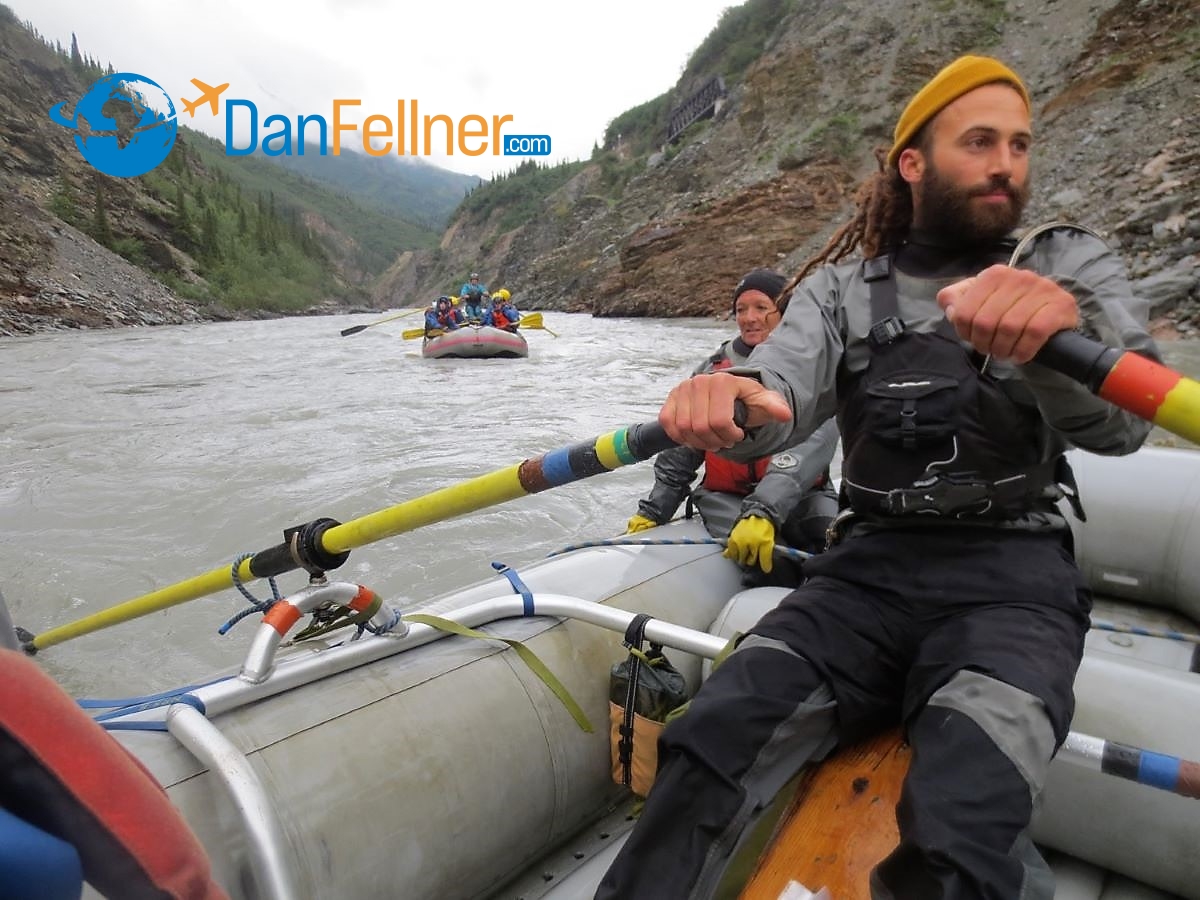
Whitewater rafting on the frigid Nenana River in Alaska.
As we approached an ominous-sounding section of the river called Ice Worm Rapids, our oarsman, a bearded young man named Wayne, warned us to hold on tight.
The raft plunged several feet. No one fell off, but the only part of my body not covered by several layers of clothing – my face – was drenched by the ice-cold water.
Wayne, who looks like the quintessential Alaskan outdoorsman but actually is from Utah, laughed. “We call that a ‘glacial facial,’” he said.
If I wasn’t already awake from my morning coffee, the Nenana had certainly finished the job. I had wanted a true Alaskan adventure. And while it was nerve-racking, uncomfortable and downright frigid at the time, I had found it.
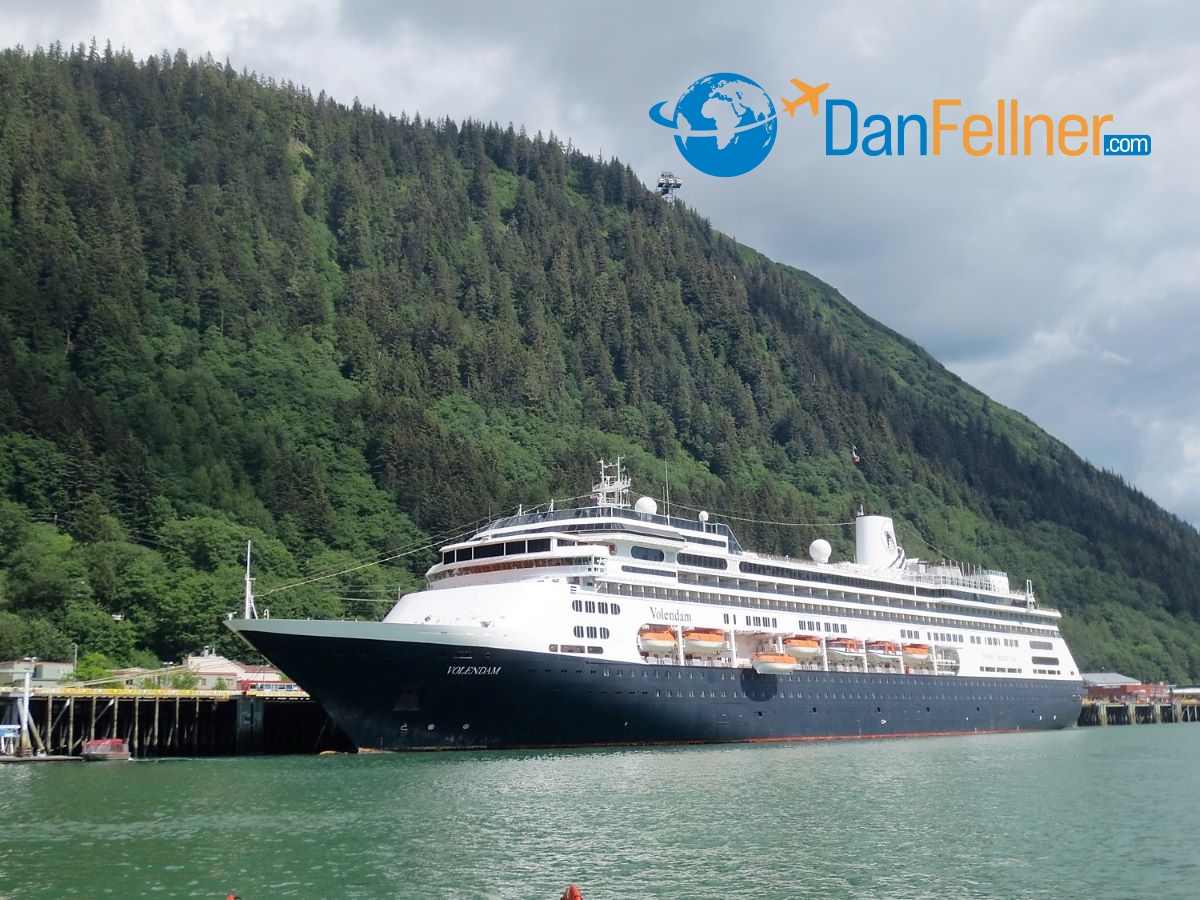
The cruise portion of the trip began on the Holland America Volendam, here docked in Juneau, Alaska.
This was my third visit to Alaska. The first two trips had been relatively sedate cruises through the Inside Passage. Juneau, Ketchikan and Skagway are charming – albeit a bit touristy – ports of call. This time, though, I wanted to see the Alaskan wilderness.
So I did what an increasing number of Alaskan cruisers are doing every year. I booked a seven-day post-cruise land tour. In addition to exploring the interior of Alaska, the journey also took me off the beaten path into Canada’s ruggedly scenic Yukon Territory.
My journey began in Vancouver, B.C., on the Holland America Volendam. About one-third of the ship’s 1,450 passengers were thinking like me and combined the cruise with a land tour taken either before or after the sailing.
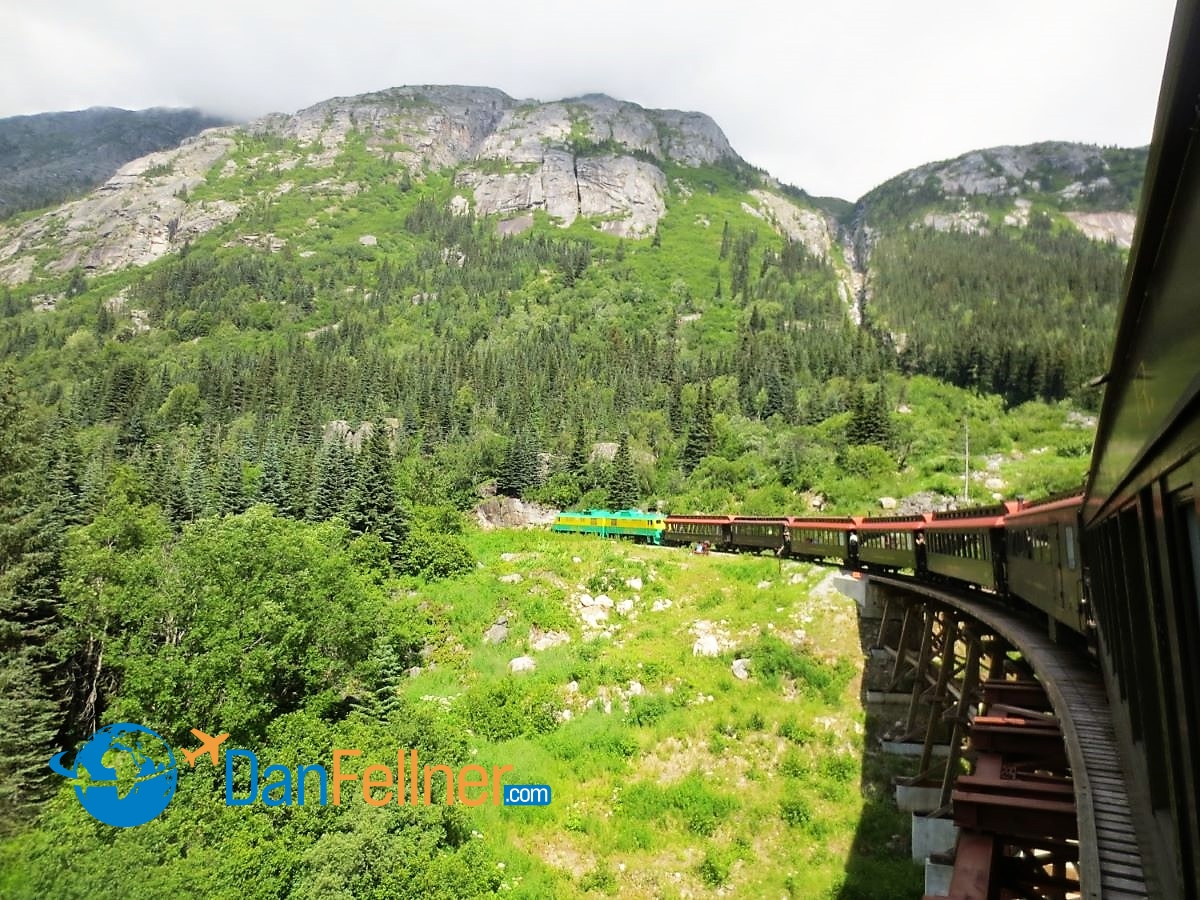
The historical White Pass and Yukon Railroad from Skagway to Fraser, British Columbia.
More than 200 passengers and I disembarked in Skagway, three days after we left Vancouver, while the same number of passengers did their land tours first, then joined the ship for the remaining four days of cruising back to Vancouver.
I spent the next week traversing the Yukon and Alaska on trains, buses and an airplane with 42 other adventure-seekers. We were shepherded every step of the way by Patrick Sanady, our Holland America “journey host.”
Indeed, the land tour seemed like a seamless extension of the cruise. Each hotel we stayed in was owned by Holland America; even the ubiquitous Purell dispensers so often seen on cruise ships were in every hotel lobby and restaurant. And though there were no midnight buffets or ice sculptures, the food was more than passable.
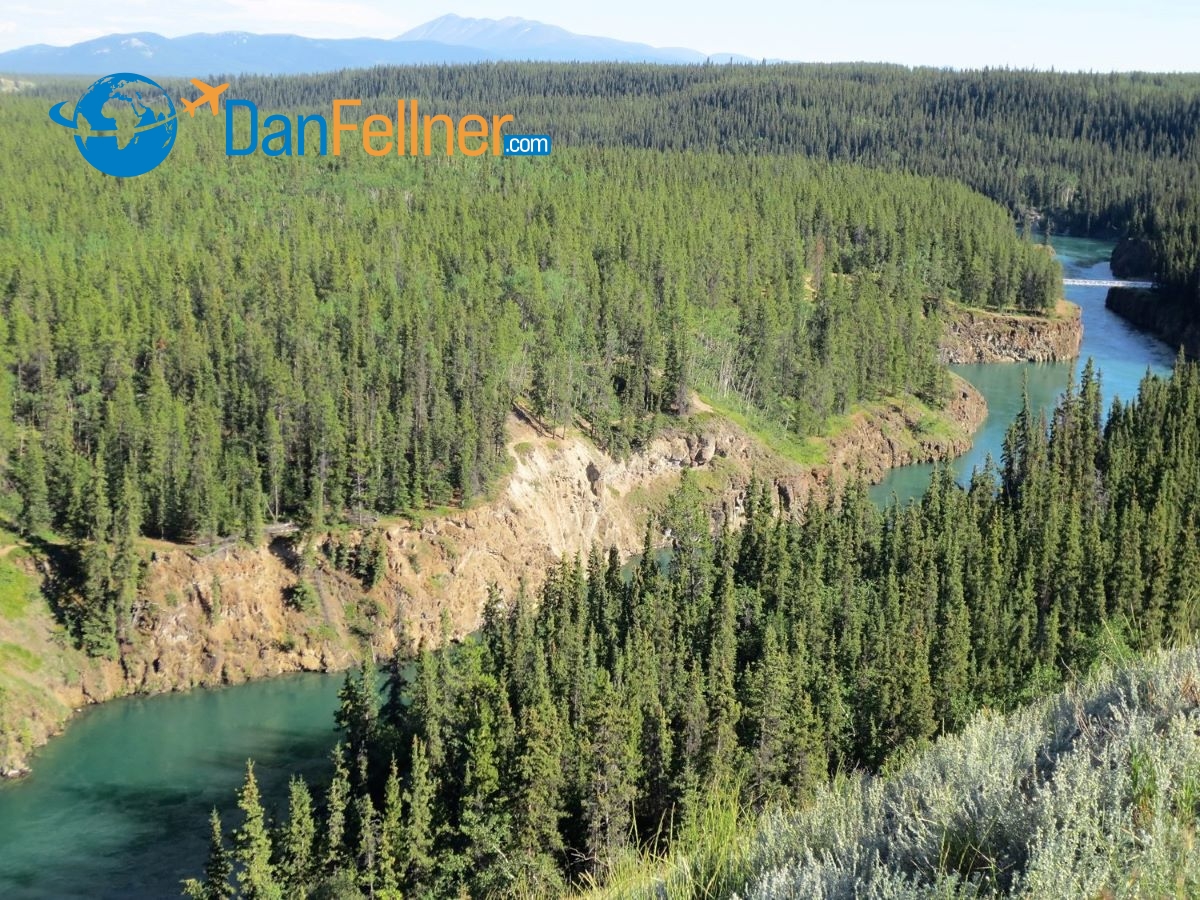
The Yukon River is nearly 2,000 miles long.
Holland America says more than half of its Alaskan cruise passengers add a land tour, a number that’s grown dramatically in recent years. On some itineraries, the number of people buying the “land + sea journey” has been as high as 70 percent.
The first leg of the land tour was the most spectacular. Our group took the historical White Pass & Yukon Route Railroad from Skagway to Fraser, B.C. The railroad was built in 1898 to transport prospectors during the Klondike Gold Rush. Today, it takes mostly tourists through narrow mountain passes, past cascading waterfalls and across glacial terrain. Billed as the “scenic railway of the world,” the three-hour, 28-mile trip did not disappoint.
A bus was waiting for us in Fraser, and then it was off to Whitehorse, capital of the sparsely populated Yukon Territory. Larger than the state of California, the Yukon has a population of about 35,000. As our driver Jess joked, the Yukon has the distinction of being the first Canadian region to be named after an American SUV.
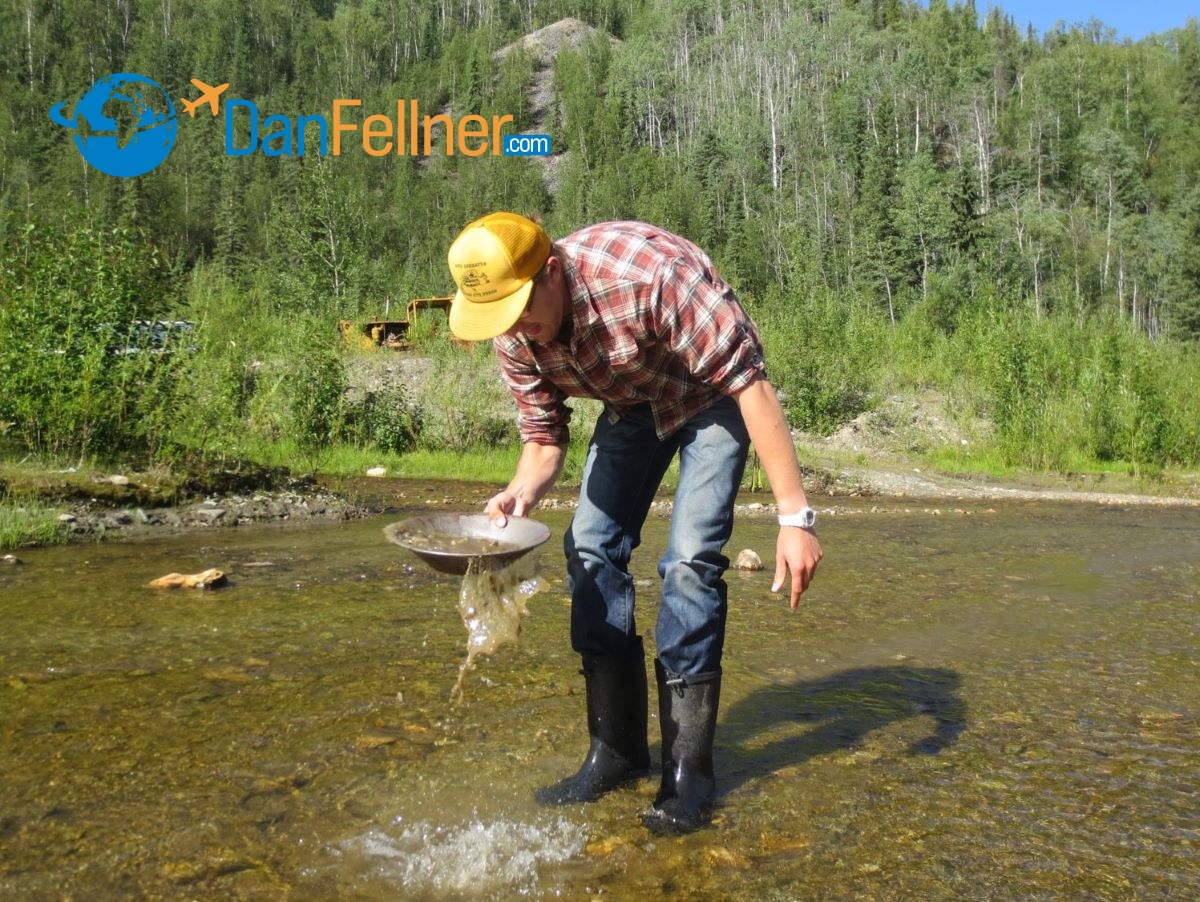
Panning for gold at a working mine in the Yukon Territory.
Our three days spent in the Yukon were focused on learning about the colorful history of the gold rush, which brought more than 100,000 “stampeders” to the region after gold was found on a small tributary of the Yukon River near Dawson City in 1896. Few of the prospectors struck it rich. Only about 30,000 completed the arduous 449-mile, six-month journey from Skagway to Dawson City; the rest perished or gave up along the way.
It took our group just three days to make the trip. In Dawson City, I especially enjoyed a sightseeing tour to a working gold mine. James, our guide who lives and works at the mine, demonstrated how modern technology involving heavy equipment has made obsolete the gold-panning techniques used by the prospectors more than 100 years ago.
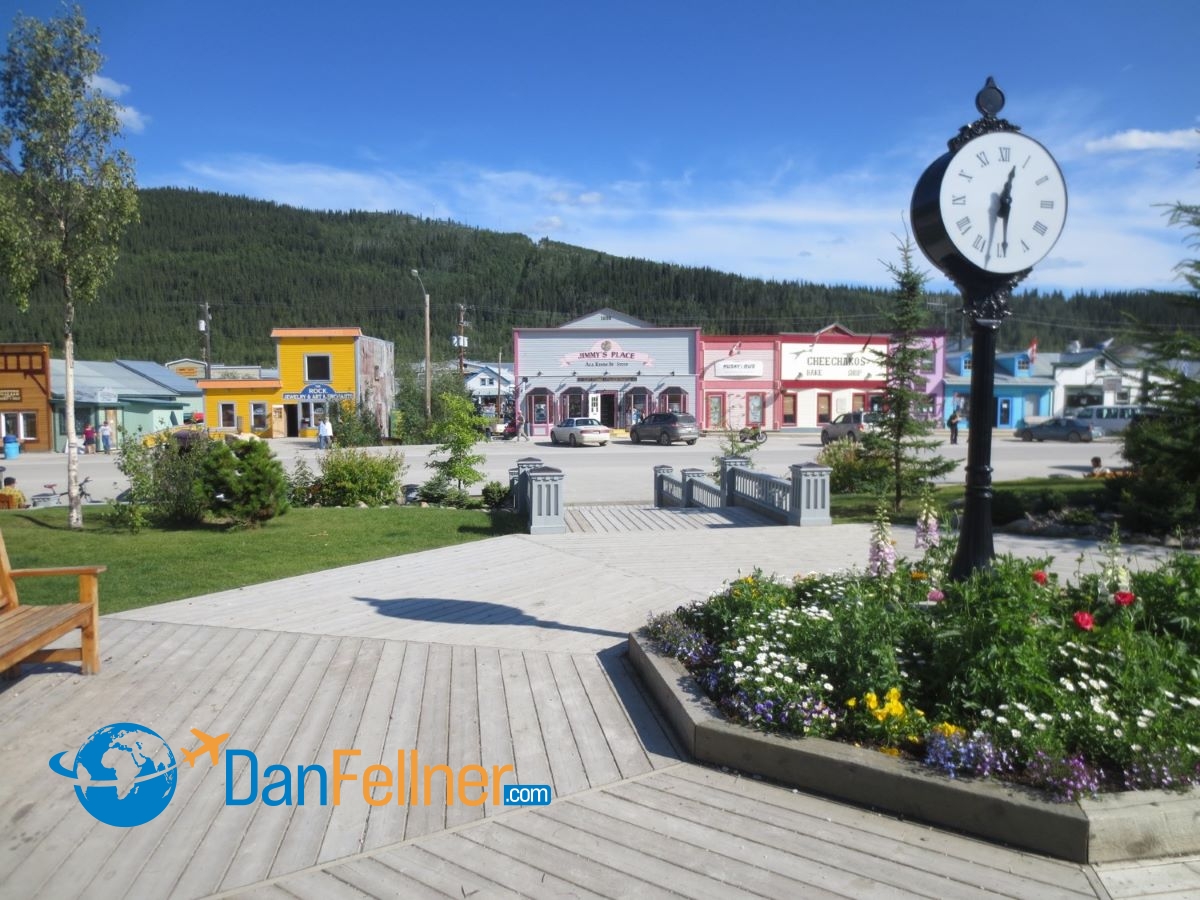
Dawson City in the Yukon Territory.
Nevertheless, James fitted us with boots and took us into the shallow waters of Gold Bottom Creek to try our luck at panning. We were promised that we could keep whatever we found. Two summers ago, a tourist pulled a 2-ounce gold nugget, worth an estimated $2,500, out of the river. My luck wasn’t nearly so good. After 15 minutes of shaking, dipping, bending and praying, the only material remaining at the bottom of my pan was worthless dirt. “It’s a bust,” James said after examining the results of my work.
However, not all of us went home empty-handed. The tourist panning next to me – a man from Spain – had discovered a gold flake. I vicariously celebrated his newfound riches until James burst my bubble once again. “About a half-penny,” he said, when I asked him to estimate the value of the Spaniard’s discovery.
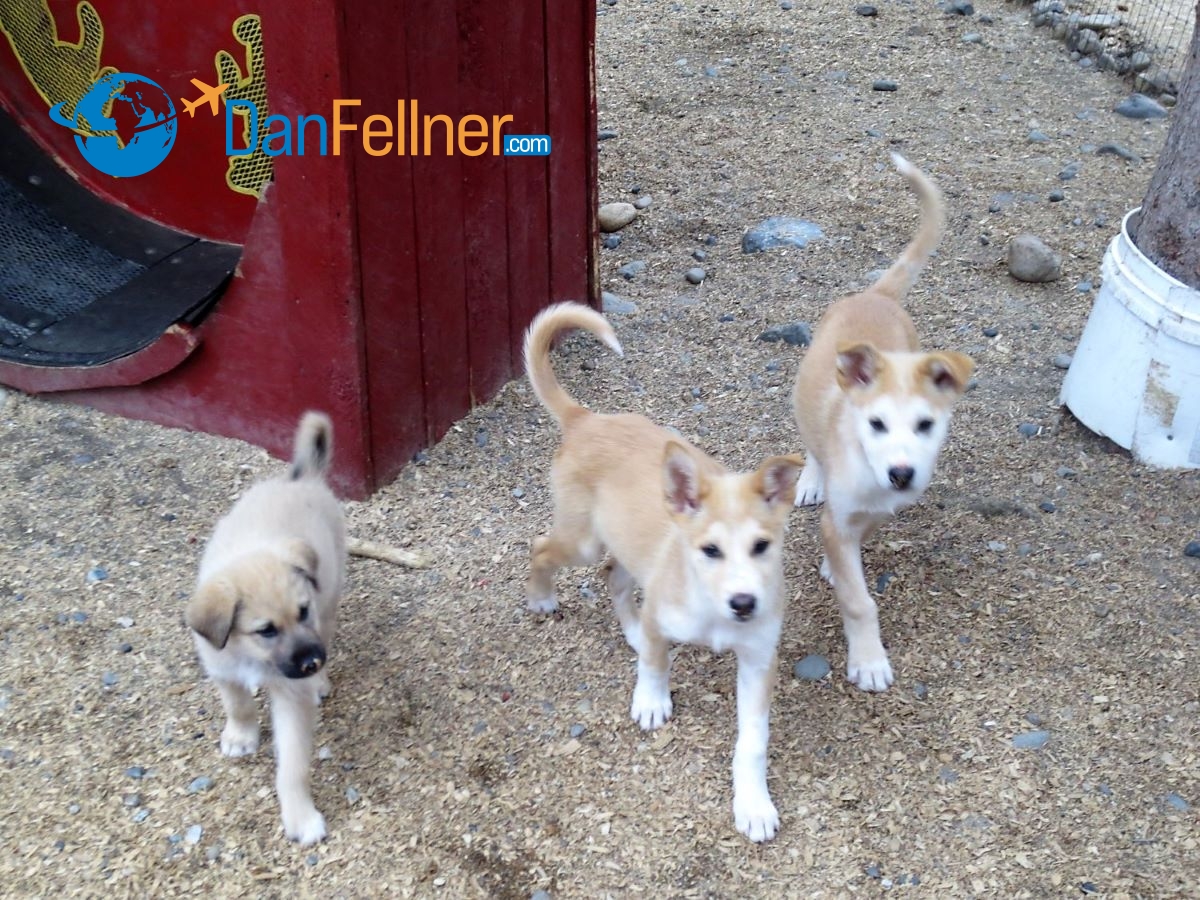
Alaskan Husky puppies at the kennel of Iditarod champion Jeff King near Fairbanks.
From Dawson City, Holland America put us on a one-hour charter flight to Fairbanks, gateway to Denali National Park. Our first evening in Denali, I booked an excursion called the “Husky Homestead Tour,” which took us to the home and kennel of Jeff King, a four-time Iditarod sled-dog race champion.
We got to see about 50 Alaskan Huskies living on the property and were even allowed to pose for pictures with some adorable 6-week-old puppies. Some of the older dogs put on a racing demonstration. But because there was no snow on the ground, instead of tugging a sled, they pulled an ATV.
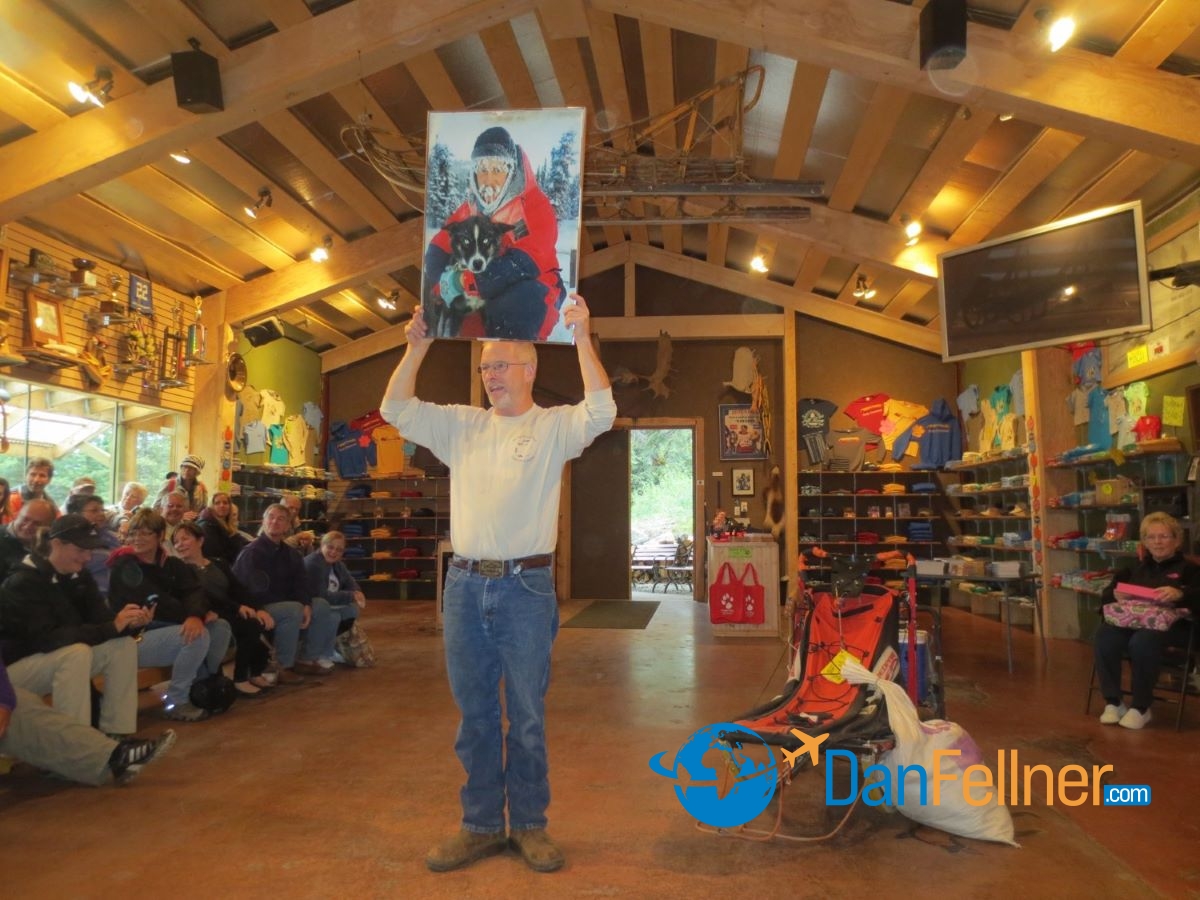
Four-time Iditarod winner Jeff King discusses sled-dog racing at his kennel near Fairbanks, Alaska.
Afterward, King – who, if he wasn’t one of the best mushers in the world, could easily make a living as a stand-up comedian — regaled our group with stories of his 24 races in the Iditarod, a grueling 1,000-mile race from Anchorage to Nome held each March.
The next morning I was up early for my whitewater-rafting trip on the Nenana River. In the afternoon, our group took a 126-mile bus tour through the heart of Denali, which at 6 million acres is about the same size as the state of Vermont.
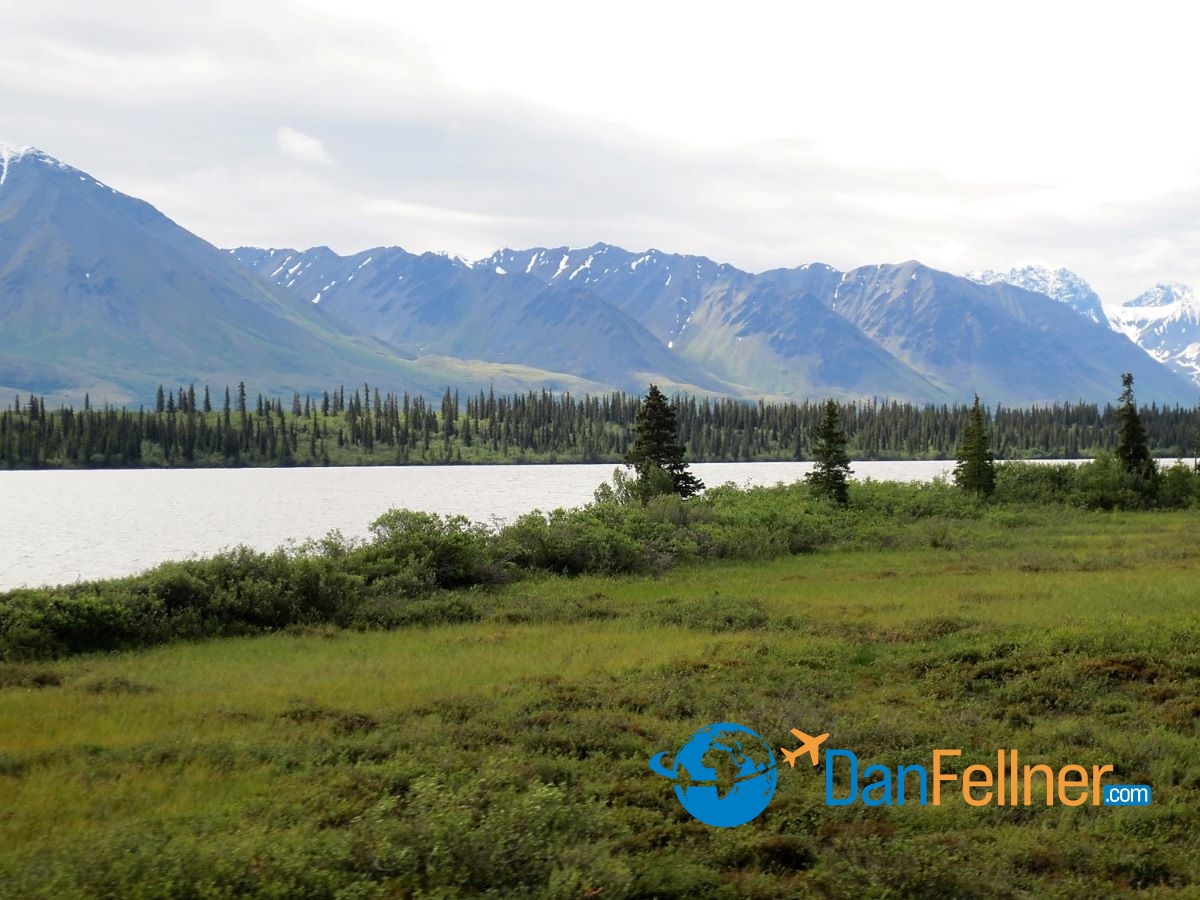
Alaskan scenery visible from the McKinley Explorer train from Denali to Anchorage.
We saw caribou, moose and red foxes. Unfortunately, clouds and rain rolled in and we didn’t get to see Denali’s most famous site – the notoriously camera-shy Mount McKinley, North America’s tallest peak. Sanady, our guide, told us that only about 10 percent of visitors to Denali are lucky enough to see an unobscured view of the 20,320-foot mountain.
On our final day, we took an eight-hour train trip from Denali to Anchorage on the luxurious McKinley Explorer. The weather hadn’t cleared up, but we still enjoyed some stunning views of the Alaska Mountain Range and deep river gorges.
Other than the temporary discomfort of a few mosquito bites and one sobering glacial facial, I had survived my true Alaskan adventure.
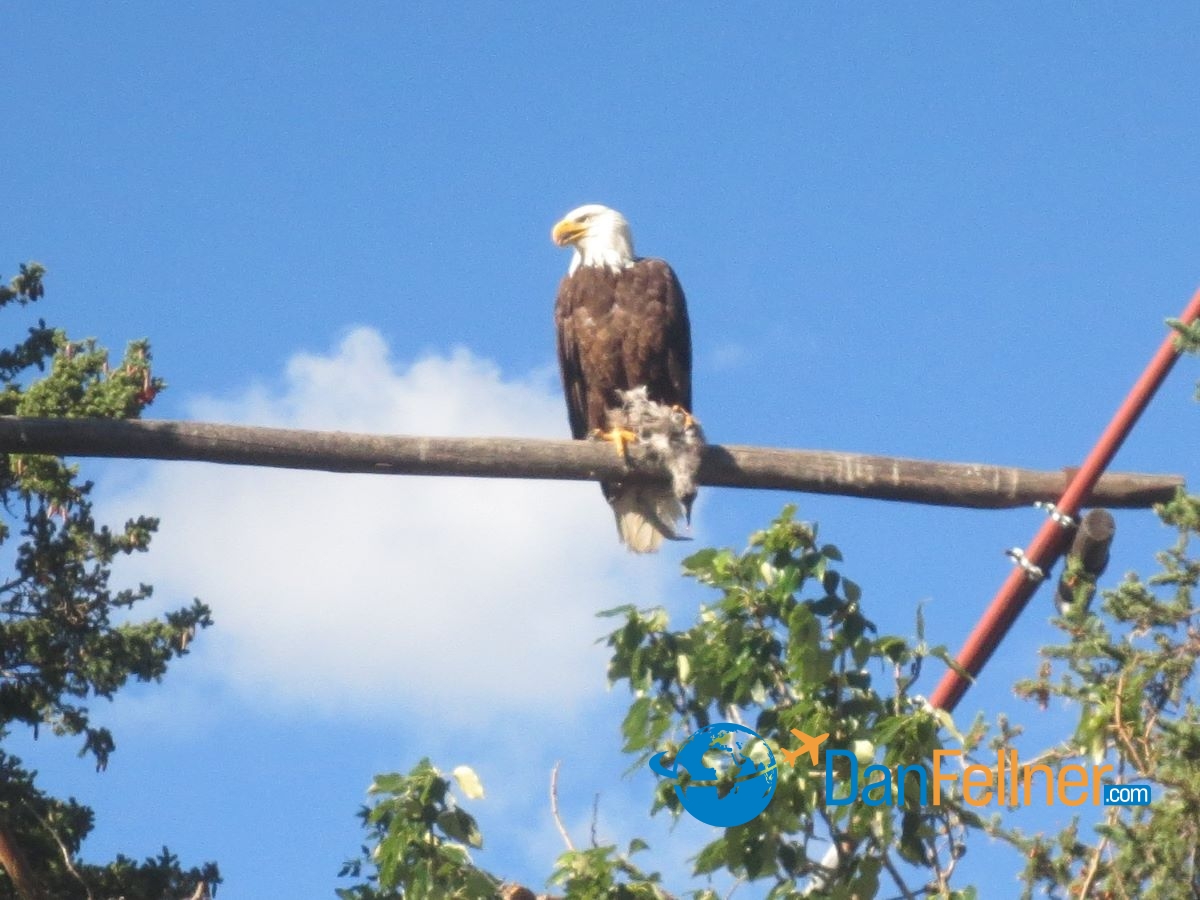
© 2014 Dan Fellner

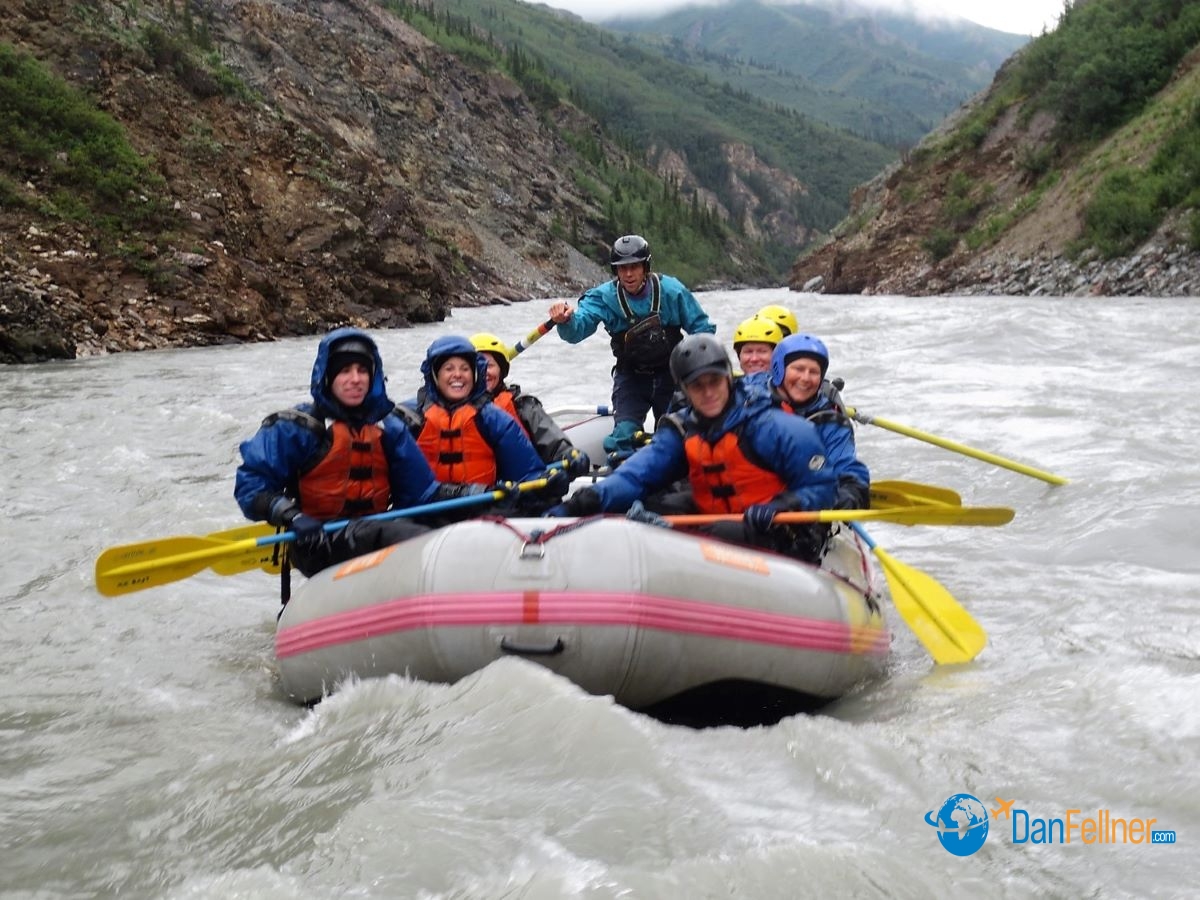
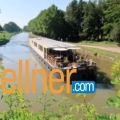
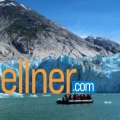
2 Comments
tpaulsen
Hello Dan, Had to chuckle a bit at your definition of a “true Alaskan adventure” that you felt you had achieved. Please reconsider: I made my way to Seattle in 1976 to take the AK Marine Ferry to Haines. On the ferry, I camped out on the open upper deck, with other seasonal workers/adventurers. Enjoyed the open vistas while we played guitars and passed a surreptitious bottle. Then we hitchhiked off the ferry, driving for a geologist through the 800 miles of darkness along the Al-Can and Richardson Hwys into Fairbanks, then catching a train down to our jobs driving shuttle bus at then Mt McKinley National Park where we were paid a whopping $4.00 a day and lived in ATCO trailers, or in makeshift camps up in the woods above “Windy Bridge”. I returned to that job for seven summers, took tourists into the park or the “doggie demo” for their “wilderness experience”. I met Jeff King when he worked in the kitchen at the old hotel inside the Park where old AK railroad cars were used as guest rooms. What you experienced, sir, was the pampered and chauffeured and herded version of seeing Alaska that every tourist sees, even back in 1976. I spent another 27 years in Juneau, Fairbanks, Anchorage and Denali and have stories upon stories of life there before telephones, electricity or a (dang) stoplight (!). Just thought you’d like to know.
Tina Paulsen
Dan
Thanks for the thoughtful comment, Tina. I realize that my “adventure” was quite tame by Alaskan standards and the remark was meant a bit tongue-in-cheek, in keeping with the tone of the rest of the article. Nevertheless, for me, the trip was far more adventurous — and authentic — than the Alaskan cruises I had taken in the past. That’s the point I was trying to make. But obviously, it in no way even comes close to the amazing experiences you’ve had in Alaska. Thanks again for your input.
Comments are Closed.